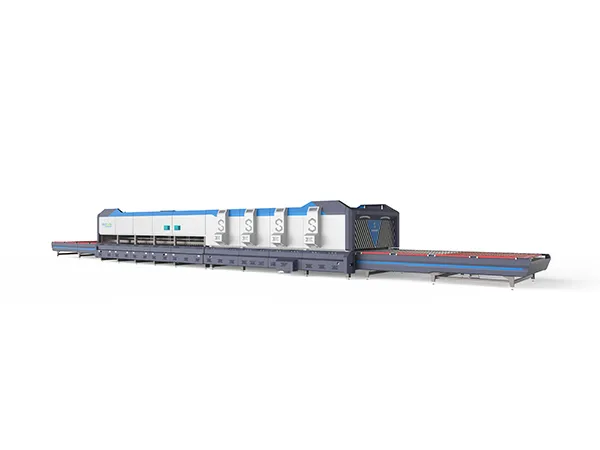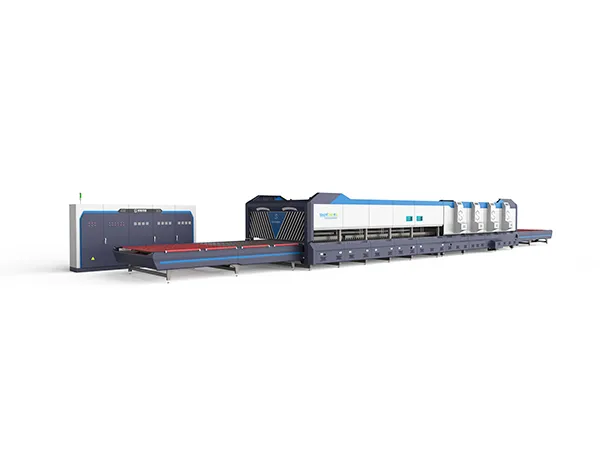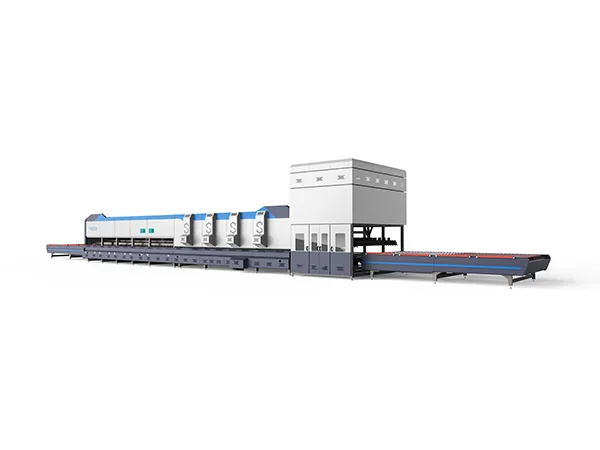The glass tempering furnace process is a heat treatment method used to strengthen glass. The process involves heating the glass to a high temperature and then rapidly cooling it.
Glass Tempering Furnace Process

1. Cutting and Inspection
Cutting: The glass is cut to the desired size and shape.
Inspection: The cut glass is inspected for any imperfections or defects that could cause it to break during the tempering process.
2. Washing
The glass is thoroughly cleaned to remove any contaminants, such as dust, dirt, or grease, which can affect the tempering process.
3. Heating
Furnace: The glass is placed in a tempering furnace where it is heated to a temperature of around 620-650°C (1148-1202°F).
Uniform Heating: The glass must be heated uniformly to ensure even strength distribution. The heating time varies depending on the glass thickness.
4. Quenching (Rapid Cooling)
Cooling: After reaching the desired temperature, the glass is rapidly cooled using high-pressure air jets.
Quenching Process: The outer surfaces of the glass cool and harden much faster than the interior. This creates compressive stress on the surface and tensile stress inside, significantly increasing the glass's strength.
5. Inspection and Quality Control
Inspection: The tempered glass is inspected for quality and any potential defects.
Testing: Various tests may be conducted to ensure the glass meets required safety and strength standards.
Benefits of Tempered Glass

Strength: Tempered glass is approximately four to five times stronger than regular annealed glass of the same thickness.
Safety: When broken, tempered glass shatters into small, blunt pieces rather than sharp shards, reducing the risk of injury.
Thermal Resistance: Tempered glass has improved thermal resistance and can withstand higher temperatures.
Applications
Tempered glass is used in a variety of applications, including:
Automotive windows
Building facades
Shower doors
Glass doors and tables
Safety glazing in public buildings
Screen protectors for electronic devices

Summary
The glass tempering furnace process is a carefully controlled procedure that enhances the strength and safety of glass. By heating the glass to a high temperature and then rapidly cooling it, the tempering process induces compressive stress on the surface and tensile stress in the interior, resulting in a product that is much stronger and safer than regular glass.










